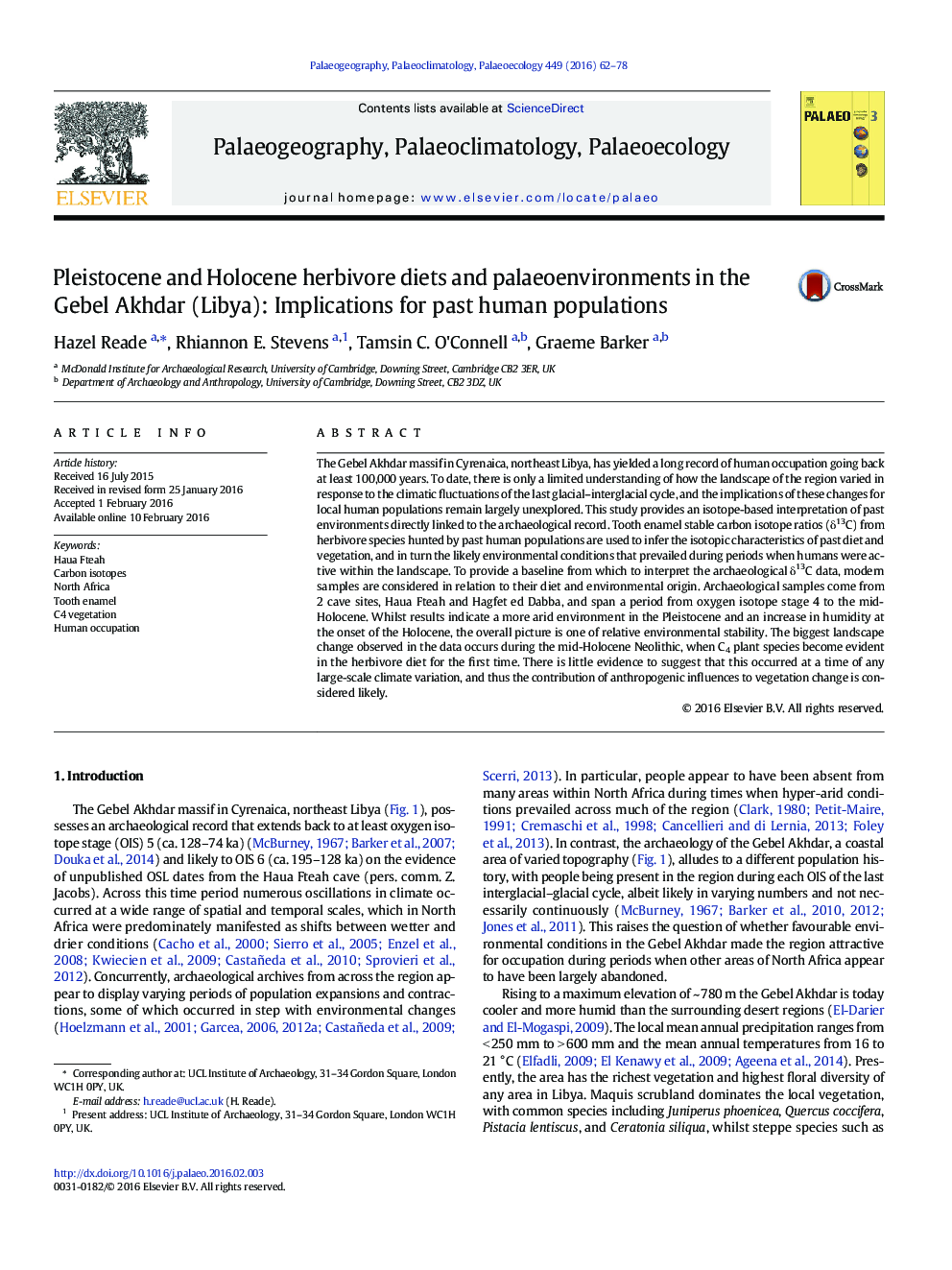| Article ID | Journal | Published Year | Pages | File Type |
|---|---|---|---|---|
| 4465750 | Palaeogeography, Palaeoclimatology, Palaeoecology | 2016 | 17 Pages |
•We study caprid and bovid tooth enamel carbon isotopes to infer diet and vegetation.•Archaeological samples from Haua Fteah and Hagfet ed Dabba are analysed.•Palaeoenvironmental interpretations for the Gebel Akhdar (Libya) are made.•The environment was relatively stable from OIS 4 to the mid Holocene.•An increase in C4 plant species in the Neolithic is demonstrated.
The Gebel Akhdar massif in Cyrenaica, northeast Libya, has yielded a long record of human occupation going back at least 100,000 years. To date, there is only a limited understanding of how the landscape of the region varied in response to the climatic fluctuations of the last glacial–interglacial cycle, and the implications of these changes for local human populations remain largely unexplored. This study provides an isotope-based interpretation of past environments directly linked to the archaeological record. Tooth enamel stable carbon isotope ratios (δ13C) from herbivore species hunted by past human populations are used to infer the isotopic characteristics of past diet and vegetation, and in turn the likely environmental conditions that prevailed during periods when humans were active within the landscape. To provide a baseline from which to interpret the archaeological δ13C data, modern samples are considered in relation to their diet and environmental origin. Archaeological samples come from 2 cave sites, Haua Fteah and Hagfet ed Dabba, and span a period from oxygen isotope stage 4 to the mid-Holocene. Whilst results indicate a more arid environment in the Pleistocene and an increase in humidity at the onset of the Holocene, the overall picture is one of relative environmental stability. The biggest landscape change observed in the data occurs during the mid-Holocene Neolithic, when C4 plant species become evident in the herbivore diet for the first time. There is little evidence to suggest that this occurred at a time of any large-scale climate variation, and thus the contribution of anthropogenic influences to vegetation change is considered likely.
